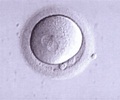Measuring the fetal zone of the adrenal gland is a better predictor of pre-term birth than measuring cervical length
Measuring the fetal zone of the adrenal gland is a better predictor of pre-term birth than measuring cervical length, according to a study to be presented today at the Society for Maternal-Fetal Medicine's (SMFM) annual meeting, The Pregnancy Meeting ™, in Chicago.
Researchers with the University of Maryland and Yale University have followed up on early research that they conducted using 3D ultrasound methods."We previously discovered that 3D adrenal gland volume (AGV) is a very accurate predictor of preterm birth," said Dr. Ozhan Turan, the study's author. "However most people around the world don't have access to that technology, therefore, we have created measurements that can be done with 2D ultrasound that are very effective to predict pre-term birth."
In the study, patients presenting with preterm labor symptoms had ultrasound measurement of the cervical length (CL) and fetal adrenal gland dimension. Using 3D ultrasound with VOCAL cAGV (AGV/ Estimated fetal weight), 2D depth of the whole-gland (D) and fetal zone (d) were measured. The d/D ratio was calculated as an index of FZE. The cAGV, d/D and CL were compared for prediction of preterm birth within seven days.
Sixty-two singletons with preterm labor at 23-37 wks´ gestation were studied. Measurement-to-delivery interval only correlated with cAGV and d/D (r=-0.32 p=0.011 and r=-0.47 p=0.001respectively) but not CL (p=0.83). Twenty women had preterm birth at less than seven days (Group A) while 42 (Group B) delivered in seven days or more from initial assessment. While CL was similar (p=0.5) cAGV and d/D were higher in group A (p< 0.0001 for both). ROC area under the curve was significantly greater for cAGV and d/D than for CL (0.82, 0.91 and 0.59, p< 0.01 and 0.001 respectively, fig) without any significant differences between adrenal gland measurements. Using ROC derived cutoffs for preterm birth in less than seven days was best predicted by d/D and cAGV but not CL.
"Prior to this we haven't had a good method to predict who will present with pre-term labor." said Dr. Turan. "Measuring the cervical length leads to a high percentage of false positives and also it has limited sensitivity," he continued. "Hopefully, if adopted, this method will allow for an easy inexpensive way to identify real pre-term deliveries. Therefore we will be better managing these pregnancies."
Advertisement
RAS















